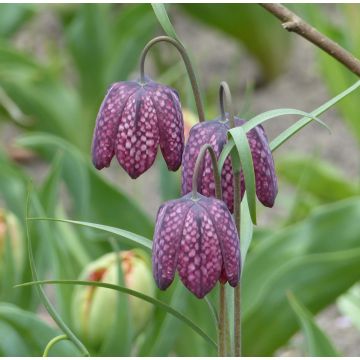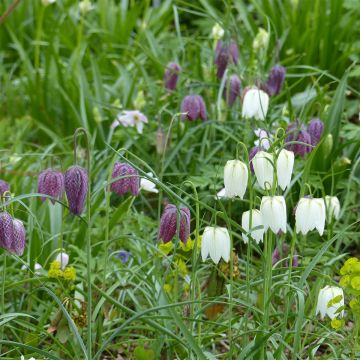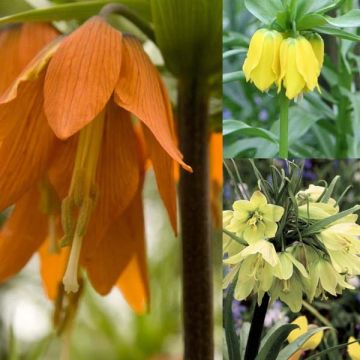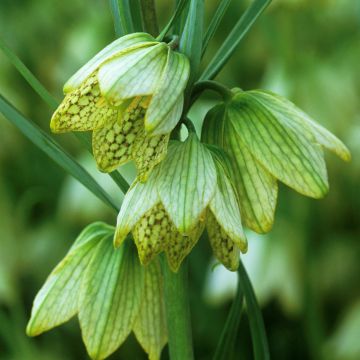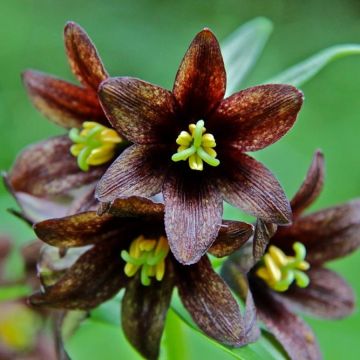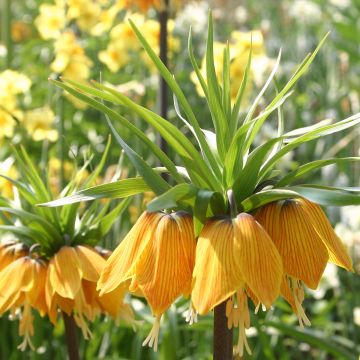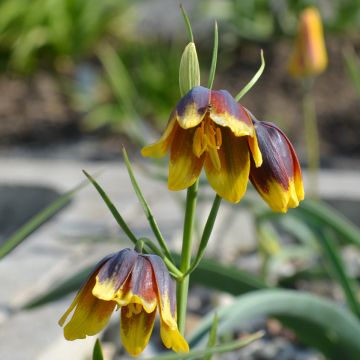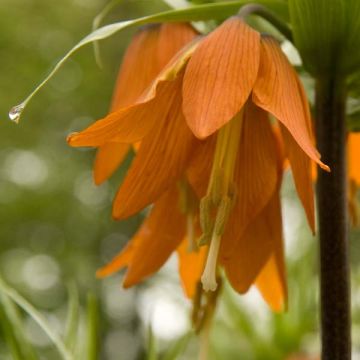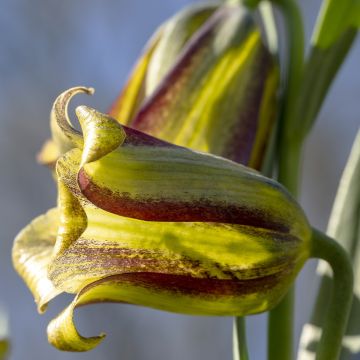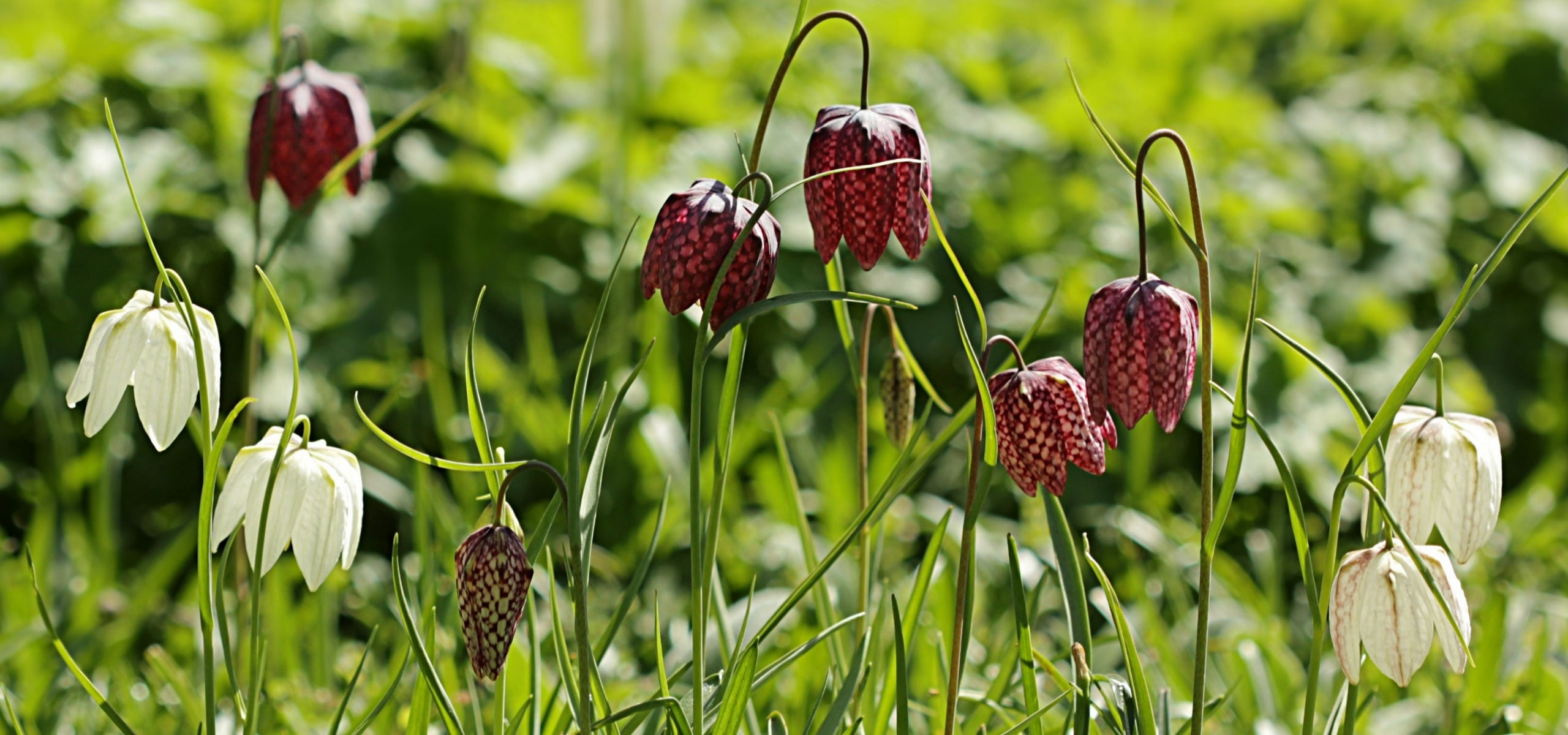
Succeeding in planting fritillaries
in the garden
Contents
The fritillaries (Latin name Fritillaria div. sp.) are bulbous plants native to temperate regions of the northern hemisphere and belong to the family of Liliaceae.
They measure from 20 cm to 1 m depending on the species.
Specific growing conditions according to the varieties
Growing conditions vary according to the diverse origins of fritillaries: full sun or partial shade depending on the species, sandy or even stony soil for F. persica, cool soil for F. meleagris, and very rich soil for F. imperialis. In general, it is advisable to plant in well-drained ground, as heavy and clayey soils often lead to bulb rot in winter.
It is worth noting that fritillaries, particularly imperialis, are an effective repellent for rodents that dislike its scent. This is why fritillaries are traditionally planted among tulip beds.
The correct planting depth for bulbs
The correct planting depth is about three times the height of the bulb. The quality and freshness of the bulbs As the bulbs of fritillaries are fragile, do not delay once you receive the catalogues or see the bulbs in garden centres: order them or buy them straight away. And plant them as soon as you purchase, ensuring you adhere to the growing conditions. The best time to plant is September.
Discover other Fritillaria
View all →Available in 2 sizes
Available in 0 sizes
Available in 0 sizes
Available in 1 sizes
Available in 1 sizes
Available in 1 sizes
Available in 1 sizes
Available in 1 sizes
Available in 1 sizes
Available in 1 sizes
Which variety to choose?
With its 1.5 m in height, the imperial fritillary (F. imperialis) is the most imposing. There are several varieties. ‘Lutea’ offers yellow flowers. ‘Rubra Maxima’ produces beautiful red flowers. And ‘Argenteovariegata’ has marbled white flowers.
The guinea fritillary (F. meleagris) is recognizable by its small bells adorned with a checkered pattern.
The Persian fritillary (F. persica), a rock garden species with black flowers, is easy to cultivate. It prefers warm situations and can reach 1 m in height.
The fritillary calendar
September-November: this is the planting period for your bulbs.
March-June: this is the peak flowering time.
October: this is the sowing period. Sow in a tray filled with sand and potting soil. Keep in a cool place until germination, then transfer the tray to a cold greenhouse. Flowering will occur 3 years later. If you do not attempt sowing, it is better to cut the faded flower stem to facilitate the regeneration of the bulb.
- Subscribe!
- Contents






























